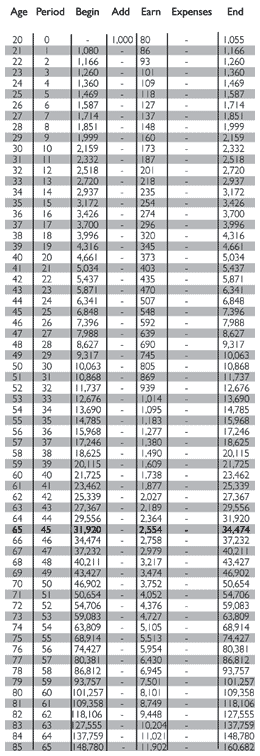

Benefits expert Brooks Hamilton sent FRONTLINE the table below in response to a viewer who had challenged the arithmetic of John Bogle, the founder of The Vanguard Group, Inc., concerning what Bogle calls the "tyranny of compounding costs" in mutual funds.
This table breaks down Bogle's example of the impact of compounding -- and compounding costs -- over the long term. On the left it shows the growth on $1,000 invested by an individual at age 20 until his/her death at age 85, assuming 8 percent annual growth. On the right, it shows what happens to that same $1,000 over the same period assuming a 2.5 percent annual cost, such as a mutual fund management fee. Over the 65 years, these annual fees eat up a staggering 79 percent of what the investor would have earned with no management costs.
The viewer's calculations were not incorrect, but he simply stopped compounding when the investor reached age 65 (marked in bold below) rather than at age 85. Remember, this example does not assume that the investor saves additional money until age 85; it just shows the growth, over time, of that one-time, $1000 investment.

